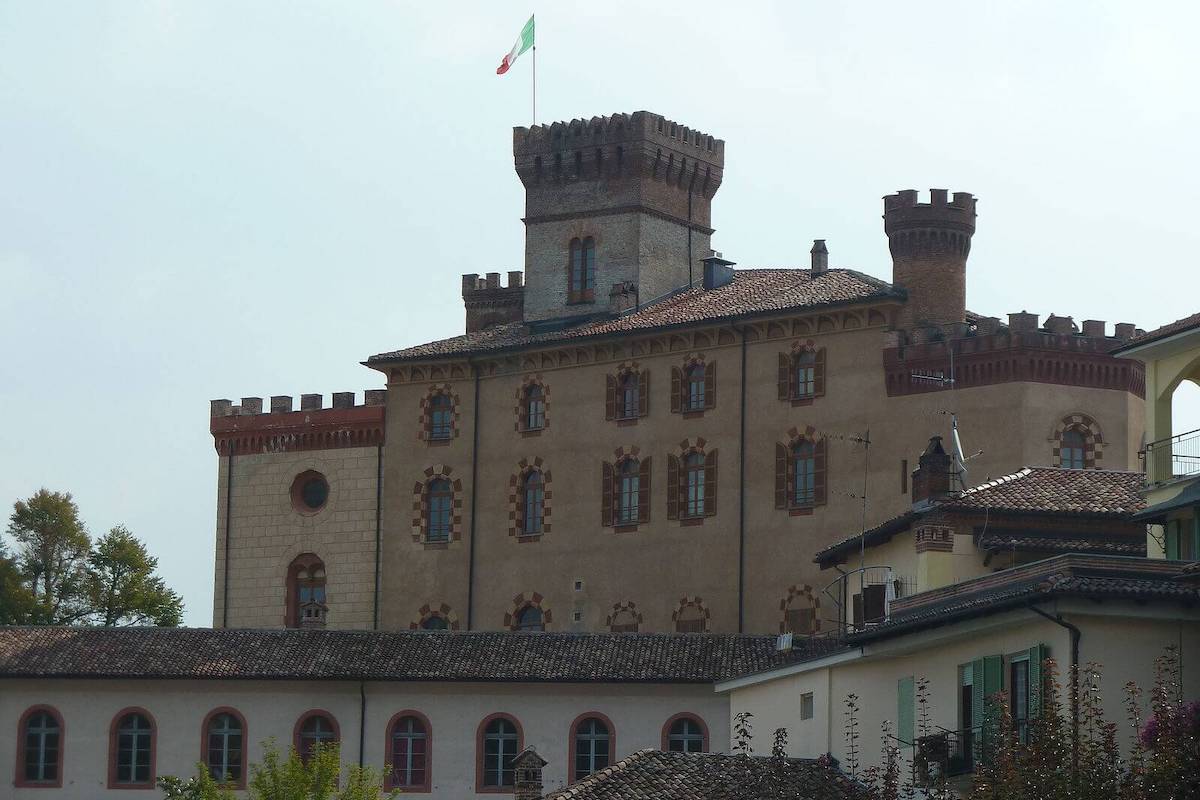Summer has now arrived and with it the green light to be able to travel and visit our country. If you are a wine lover and are looking for a journey in the name offood and wine, without disdaining , Story, the village of Barolo, in Piedmontese Langhe, is certainly one of the perfect places for your holidays. One of the most interesting structures in the village is the Barolo Castle. In fact, here is the "WiMu"(Wine Museum), or the museum dedicated to the famous wine, which takes its name from this area. This castle has amillennial origin and a truly fascinating story, which also involves the writer Silvio Pellico, author of the famous "My prisons".

History of the Castle of Barolo
The Castle of Barolo was born as a fortification in Xth century (at the behest of the king Berengar I), to protect the area from attack Hungarians e Saracens. There are still traces of this original nucleus, at the foot of the eastern tower of the castle. Around 1200 the castle passed under the control of municipality of Alba and later, in 1250, was bought by Falletti family. In the following two centuries, the castle suffered serious damage due to looting, but it was renovated by the Fallettis (the first changes to the structure began here). In 1730 Barolo became marquisate. The Castello di Barolo will remain the property of the Marquises Falletti until the second half of the nineteenth century. This had in fact become the family's country residence. Among the illustrious guests of the Fallettis was the writer Silvio Pellico, friend of the marquises, as well as curator of the family library.

The castle remained with the Fallettis until 1864, year of the death of Juliet Colbert (Giulia of Barolo), wife of the Marquis Carlo Tancredi Falletti. Precisely at the behest of the marquise, the structure was converted into a college (Barolo College) and underwent some changes to make it fit for the new status. The Barolo Castle remained the seat of the college until the first half of the twentieth century. After a period of neglect, the municipality of Barolo he decided to buy the castle, with subsequent restoration. From 1982 its cellars host theRegional Enoteca of Barolo and, in September 2010 inside the Castle the WiMu, or the wine museum, which every year attracts many fans of the sector from all over Italy and beyond.
The WiMu of Barolo: the museum that celebrates wine
WiMu was born thanks to the ingenuity of Francois Confino, already set up of very important museums all over the world. This museum is the ideal place for all wine lovers who, through gods interactive itineraries, they can discover the millennial history and the wine culture, but above all it relationship between wine and humanity, which has been going on since time immemorial. The museum is set up 4 plans of the Castle of Barolo, in twenty-five rooms. The visit starts from third floor with the history of wine in antiquity, Then the second floor, you will find the dedicated section to wine in art. first floor it is instead dedicated to Marquises Falletti, While at the floor -1 you will find the Barolo College and Temple of the Enotourist. Finally, in the cellars there is the headquarters ofRegional Enoteca of Barolo, room entirely dedicated to the noble wine produced in this region.
The WiMu therefore offers the visitor aimmersive experience, at 360 degrees, on the world of wine, not just Barolo. Certainly the setting up of the museum inside the Castle of Barolo was a winning choice, since it is a structure with a very high historical value. If you are on vacation in Piemonte, especially in the area of Langhe, what better idea than to visit the wine museum and maybe enjoy an excellent glass of Barolo afterwards? Tickets can already be booked on the official WiMu website.





